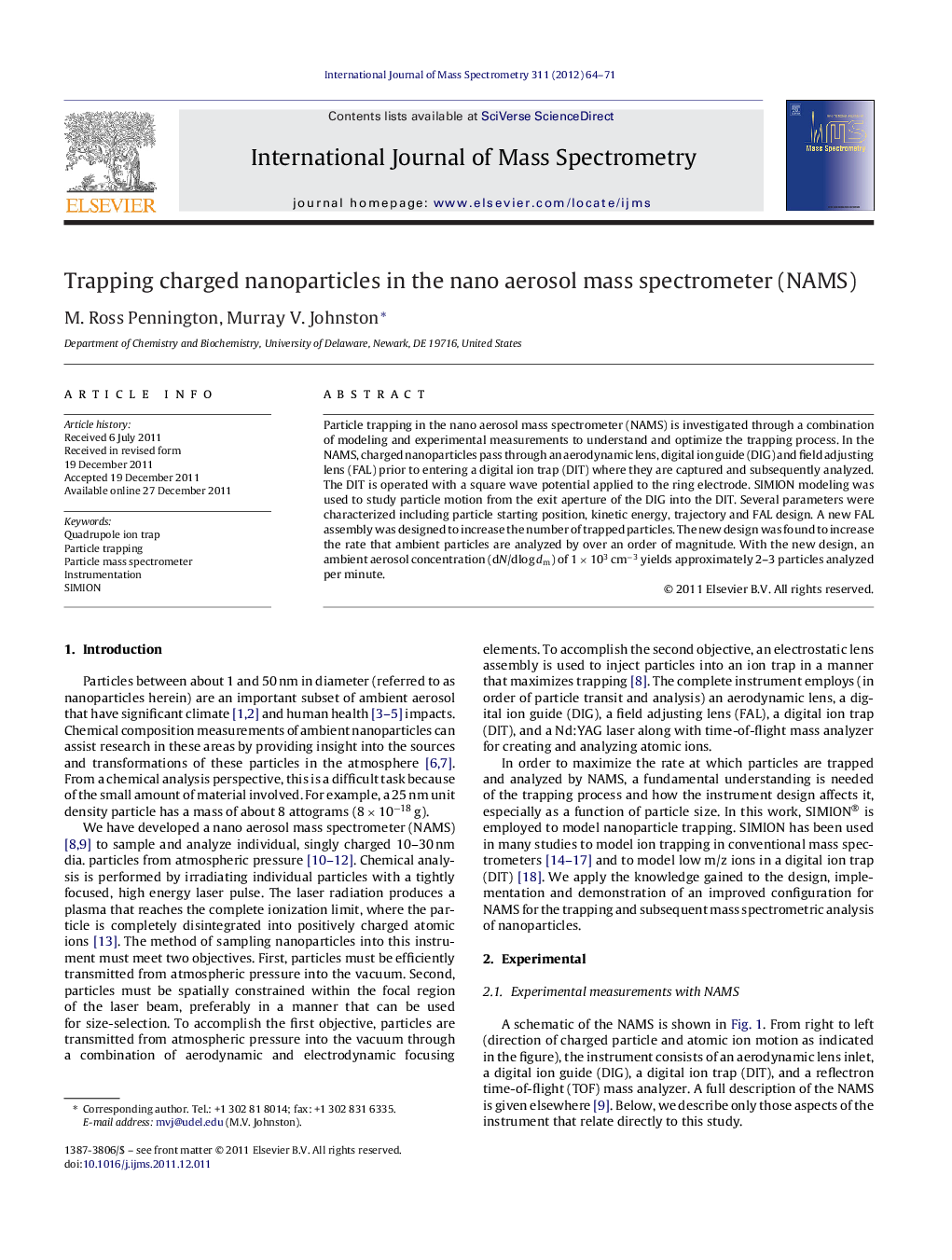| Article ID | Journal | Published Year | Pages | File Type |
|---|---|---|---|---|
| 1193614 | International Journal of Mass Spectrometry | 2012 | 8 Pages |
Particle trapping in the nano aerosol mass spectrometer (NAMS) is investigated through a combination of modeling and experimental measurements to understand and optimize the trapping process. In the NAMS, charged nanoparticles pass through an aerodynamic lens, digital ion guide (DIG) and field adjusting lens (FAL) prior to entering a digital ion trap (DIT) where they are captured and subsequently analyzed. The DIT is operated with a square wave potential applied to the ring electrode. SIMION modeling was used to study particle motion from the exit aperture of the DIG into the DIT. Several parameters were characterized including particle starting position, kinetic energy, trajectory and FAL design. A new FAL assembly was designed to increase the number of trapped particles. The new design was found to increase the rate that ambient particles are analyzed by over an order of magnitude. With the new design, an ambient aerosol concentration (dN/dlog dm) of 1 × 103 cm−3 yields approximately 2–3 particles analyzed per minute.
Graphical abstractFigure optionsDownload full-size imageDownload high-quality image (191 K)Download as PowerPoint slideHighlights► The nano aerosol mass spectrometer (NAMS) analyzes individual airborne particles in the 10–30 nm size range. ► Inside the NAMS, charged nanoparticles are captured by a digital ion trap (DIT). ► Particle trapping is optimized through proper design of a field adjusting lens (FAL) assembly upstream of the DIT. ► A new FAL assembly increases the particle analysis rate of NAMS by an order of magnitude over the previous design.
